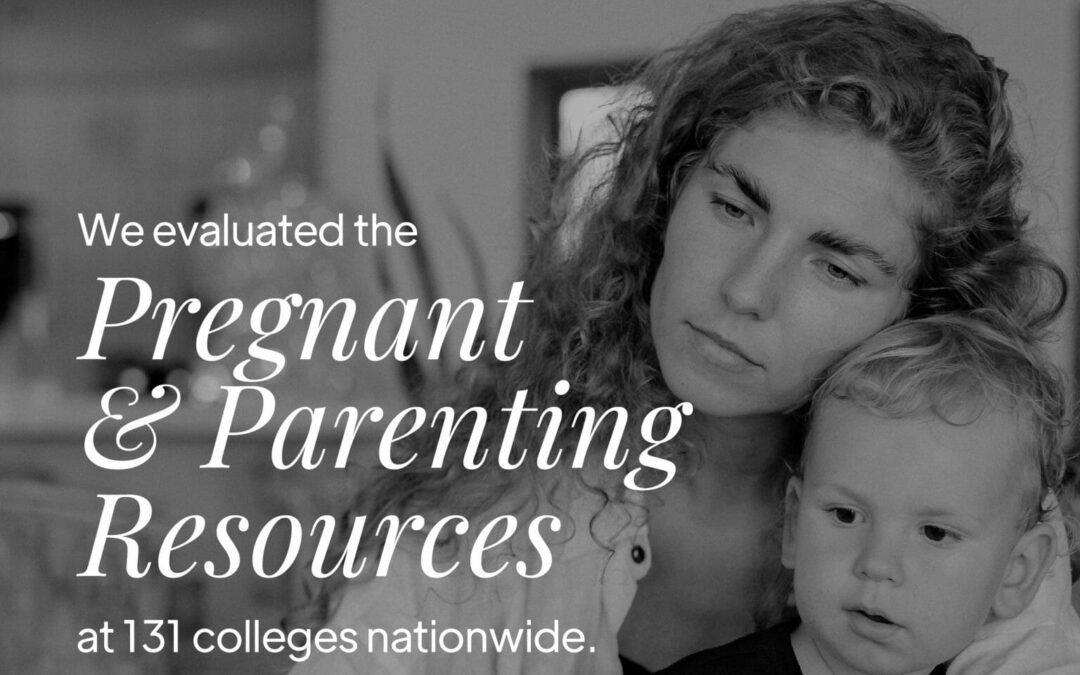Evaluating Resources for Pregnant and Parenting Students at Colleges in U.S. Key Cities
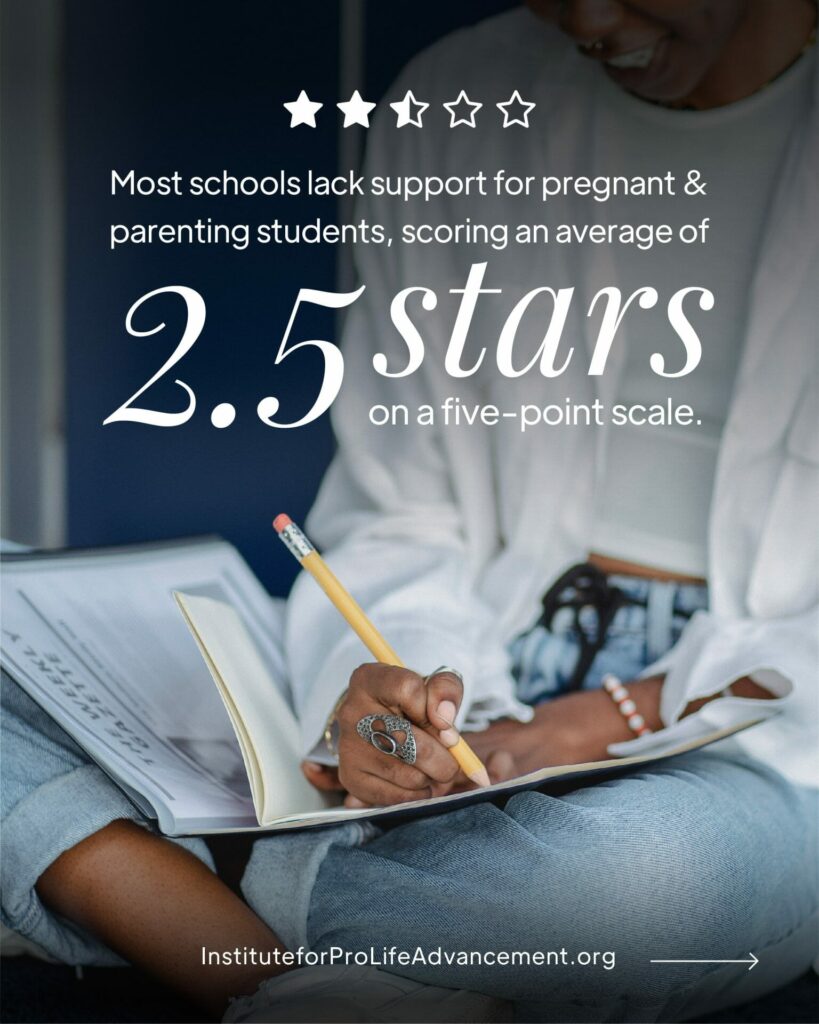 OVERVIEW: The almost universal consensus that education is a pathway out of poverty has not often been combined with programming and infrastructure targeted to the needs of pregnant and parenting students, and the needs of this community are growing as is their number.
OVERVIEW: The almost universal consensus that education is a pathway out of poverty has not often been combined with programming and infrastructure targeted to the needs of pregnant and parenting students, and the needs of this community are growing as is their number.
The Urban Institute reports that nearly 1 in 4 undergraduate students and 1 in 3 graduate students is also parenting. This community represents people making a commitment to both their futures and future generations. Since 2019, Students for Life has been evaluating the needs of this important community, so that no student need choose between their child and their education.
Introduction
The purpose of this research project is to investigate the availability & accessibility of pregnancy resources for college students at colleges within strategically chosen cities. According to the CDC, approximately 3.6 million American women have a child each year. It’s been reported that 3.8 million students are raising young children while enrolled in college, 2.7 million (70%) are women. Understandably, having a child should never be a barrier to education.
To protect pregnant and parenting students, Title IX of the Education Amendments of 1972 states that, “No person in the United States shall, on the basis of sex, be excluded from participation in, be denied the benefits of, or be subjected to discrimination under any education program or activity receiving Federal financial assistance.”
Accommodation Categories
A. Classroom Policies
As a school that is expected to remain Title IX compliant, does this school require professors to allow students to make up exams and exams that happen during or after childbirth? Does the school provide special accommodations such as priority registration for a pregnant or parenting student? Are these accommodations clearly stated and easily found in the school’s website, handbook, or written policies?
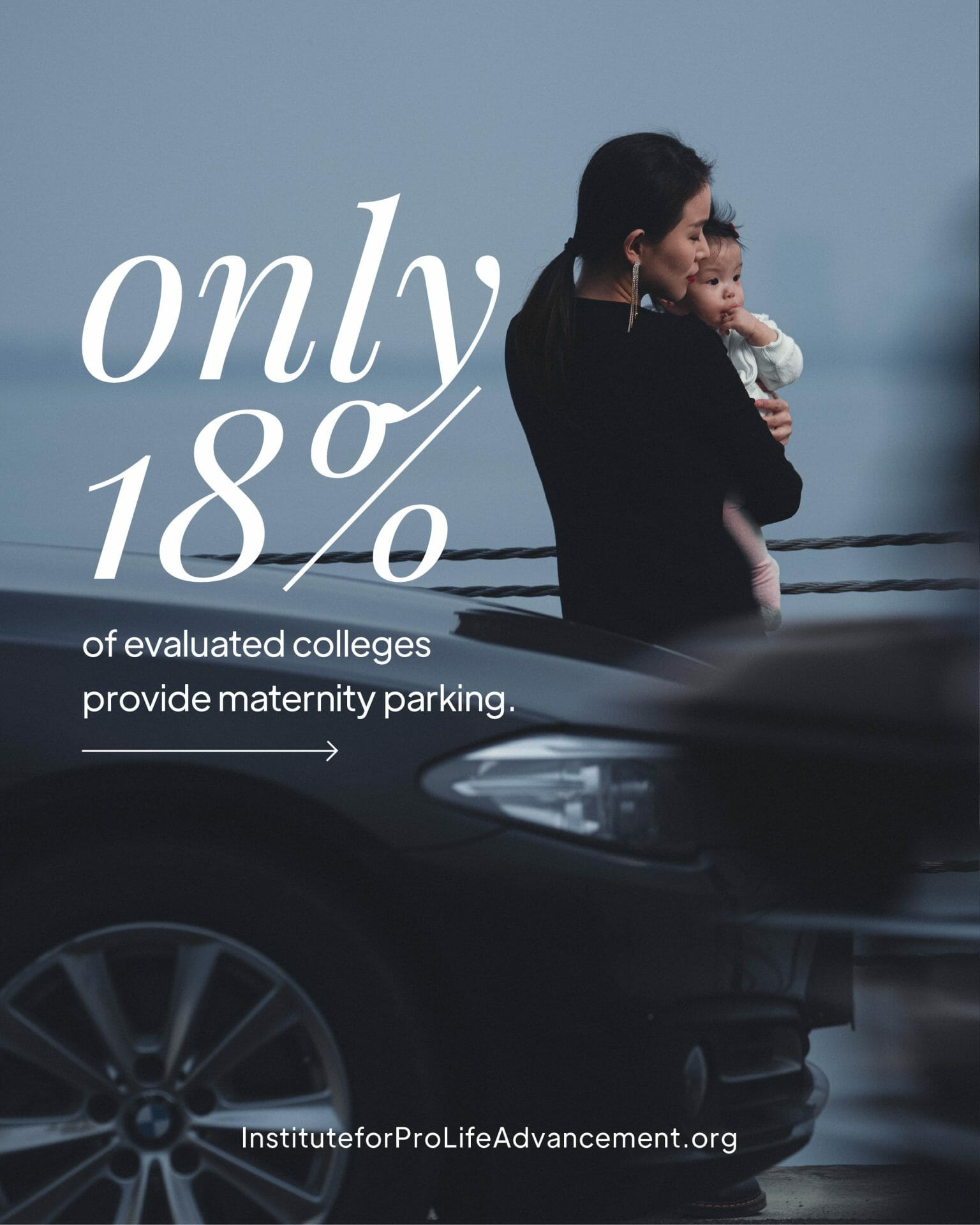 B. Housing Policies
B. Housing Policies
Are the housing policies at this college or university accommodating and/or reasonable for students who may be pregnant or parents (i.e., If a student becomes pregnant will she be forced to leave her on campus housing?) Does this university offer family housing or credible recommendations for families to live off campus?
C. On-Campus Resources
Does the school’s campus provide conveniences such as multiple lactation rooms, diaper decks in men’s and women’s restrooms, maternity parking, and on-campus childcare that is open to students, faculty, and staff with children of all ages?
D. Financial Assistance
Does this institution offer grants, scholarships, or other financial assistance to students who are pregnant and/or parents? Do the school’s online published resources clearly provide information on these resources, if applicable? Does the institution’s Financial Aid Office direct these students to grants and local scholarships?
E. Medical Attention
Does this school have a medical center on campus? If so, does the medical center perform STD/STI testing, administer pregnancy tests,
gynecological exams, and/or provide recommendations to pregnancy help centers? Does the university provide health coverage for pregnant
students? If the health center is not equipped to provide these forms of health care, do they have a relationship with a credible facility who is?
Key Findings
This study yielded the following notable findings to be used as a baseline for formulating strategy the pro-life movement:
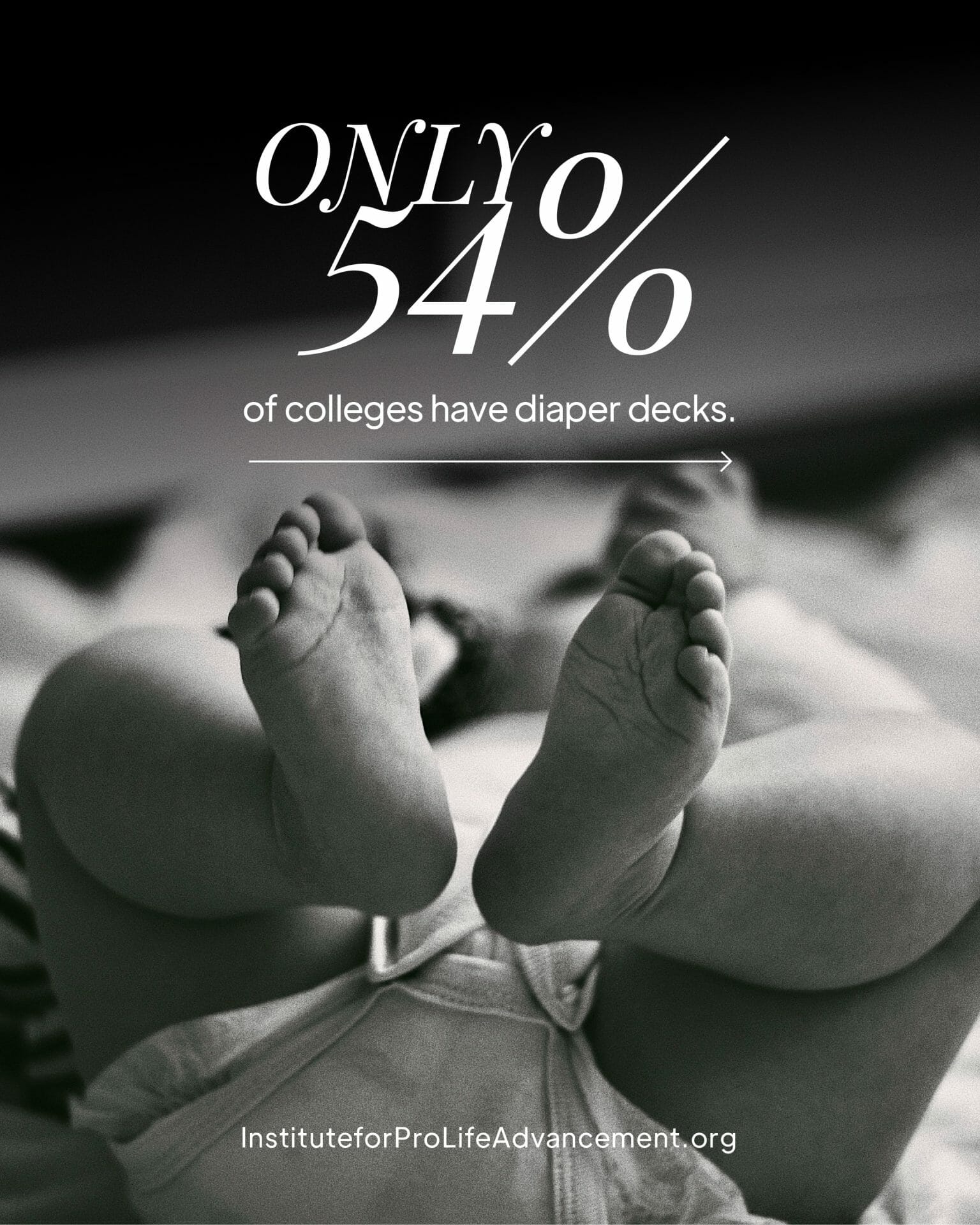 Several accommodations were offered, but many schools have room for improvement.
Several accommodations were offered, but many schools have room for improvement.- Some school administrations are willing to make improvements.
- The most commonly offered accommodation was providing referrals of pregnant students to local healthcare providers.
- Among the least commonly offered accommodations was maternity parking.
This project aimed to improve campus inclusivity towards pregnant and parenting students in colleges and universities. The recommendations made were based on commonalities found among areas of accommodation that were lacking in the schools researched.
By implementing these suggestions, colleges and universities can better support their pregnant and parenting students and improve their campus inclusivity. We look forward to continuing to involve the pertinent initiatives of Students for Life of America to deliver this success to college campuses throughout the United States.
Rationalizing the Findings
According to the National Center for Education Statistics (NCES), women surpassed men as college attendees for the first time in 1979. In that year, 50.4% of college students were women, while 49.6% were men. Since then, the gender gap in college attendance has continued to widen, with women consistently comprising a higher percentage of college students than men.
As of 2021, NCES data shows that women make up approximately 57% of college students in the United States, while men make up approximately 43%. This gender gap in college attendance has been attributed to a number of factors, including greater educational opportunities for women, changes in workforce demands, and cultural shifts in attitudes towards higher education. The widening of the gender gap represented a major paradigm shift; followed by a second major paradigm shift for which resource allocation has not adequately adapted.
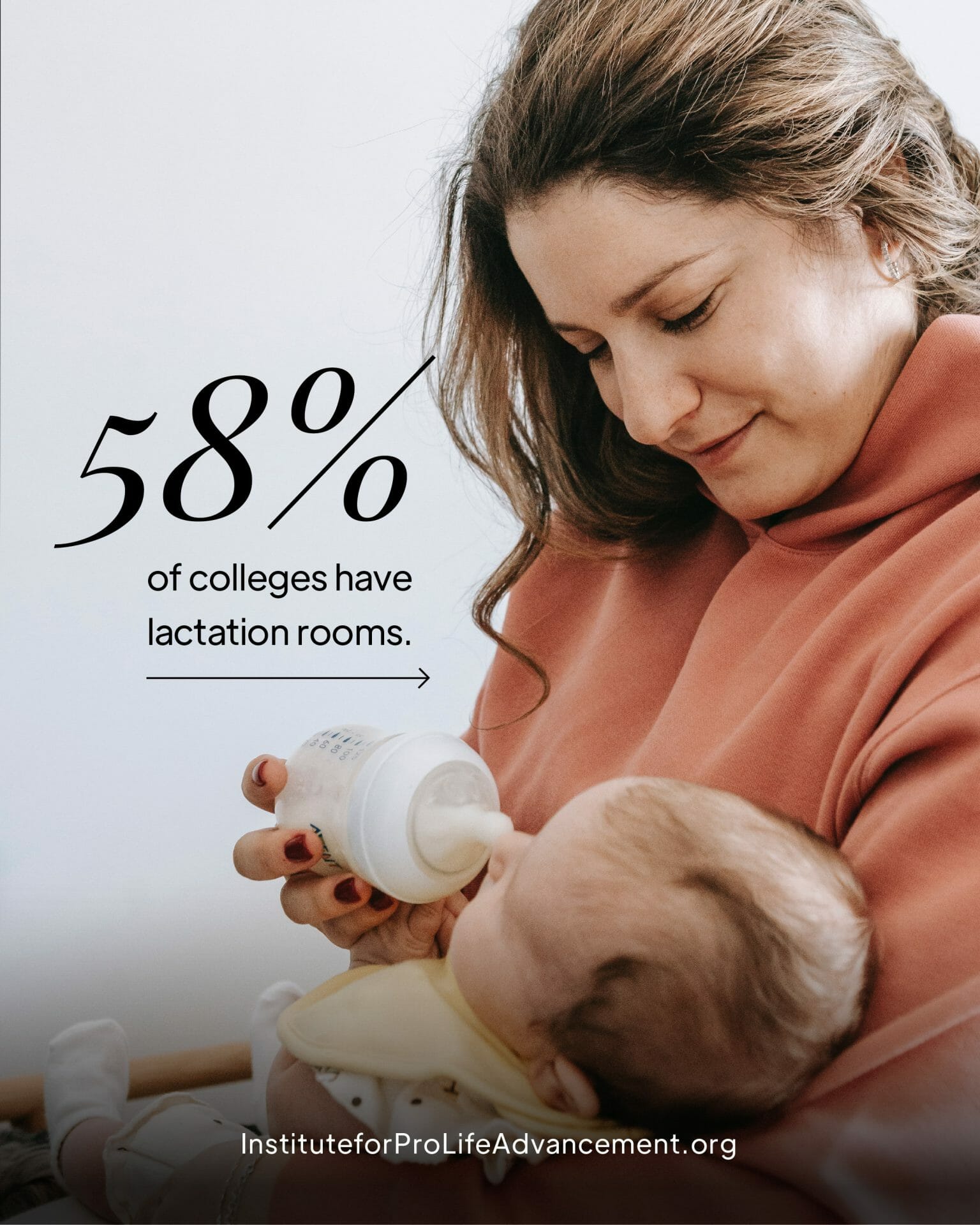 It is estimated that approximately one in five college students is a parent, according to a report from the Institute for Women’s Policy Research. This translates to roughly 3.8 million student parents in the United States in 2020. Furthermore, during the 2015-16 school year, two in five college student parents were single mothers (1.7 million total). Overwhelmingly, the majority of mothers enrolled as students are single (62%), whereas the majority of fathers enrolled as students are married(61%).
It is estimated that approximately one in five college students is a parent, according to a report from the Institute for Women’s Policy Research. This translates to roughly 3.8 million student parents in the United States in 2020. Furthermore, during the 2015-16 school year, two in five college student parents were single mothers (1.7 million total). Overwhelmingly, the majority of mothers enrolled as students are single (62%), whereas the majority of fathers enrolled as students are married(61%).
Reality has indeed experienced a fundamental shift from the underlying assumptions of the demographics predominantly representing current college attendees. It is therefore required for college campuses to shift to adhere to this reality.
Recommendations
Recommendations were made to colleges and universities in this project’s effort to improve their campuses’ inclusivity toward pregnant and parenting students. Only when the criteria of an accommodation category was not met would suggestions for improvement be addressed directly with the school’s administration.
Every school researched represents a unique set of circumstances for that school, though there were commonalities among areas of accommodation that were lacking. For example, suggestions for a school’s overall improvement could have included suggesting the school provide any of the following: a dedicated page on the school’s website detailing the pregnancy and parenting accommodations available, contact information for local maternity homes, maternity parking, diaper decks, lactation rooms, on-campus childcare, scholarships or grants exclusive to pregnant and parenting students, or medical services specific to pregnant and postpartum students or staff.
Conclusion
This project aimed to improve campus inclusivity towards pregnant and parenting students in colleges and universities. The recommendations made were based on commonalities found among areas of accommodation that were lacking in the schools researched.
 These recommendations include…
These recommendations include…
- creating a page on the school’s website listing all accommodations provided
- requiring professors to allow students to make up exams and exams that happen during or after childbirth
- providing priority registration for pregnant or parenting students
- offering family housing or a housing stipend
- providing special parking accommodations for pregnant students
- installing diaper decks and lactation rooms
- offering childcare choices for children
- offering more scholarships and grants to pregnant and parenting students
- forming a relationship with a health center
- organizing a pregnant and parenting student support group
By implementing these suggestions, colleges and universities can better support their pregnant and parenting students and improve their campus inclusivity. We look forward to continuing to involve the pertinent initiatives of Students for Life of America to deliver this success to college campuses throughout the United States.
Click below to read the full study, including a detailed review of the individual institutions.

